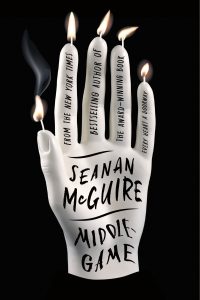Roundtable: SF Aesthetics
In any discussion of “beauty” it is important to remember that much of what we mean by that is culturally determined. The current generally-accepted standards for feminine beauty, for example, privilege persons of European ancestry over those whose genetics owe more to, say, Central Asia, or West Africa.
Something similar appears to have taken place in the realm of literature, in that some time ago a group of (white, male, Western) critics decided that in-depth exploration of the human psyche was the only acceptable standard against which literary quality should be judged. This has always seemed daft to me: rather like art critics suddenly deciding that the naturalistic portrait was the only acceptable form of painting. Rubens might have been happy with it, but Dali would have been furious and Turner might have given up in despair. Sooner or later this silliness is going to explode, but it may take another generation or two.
There are things that appear to be admired as beautiful in all human cultures, but as science fiction writers and critics we should immediately be suspicious of potential species-related bias. Nnedi Okorafor was a guest on a BBC World Series program recently, and one of her fellow guests was a woman who designed interiors for hospitals with a view to making them better places for healing. Her explanations for why certain design choices worked were rooted firmly in evolutionary biology. So a set of colours that is restful and calming to us might prove dangerously stressful to the Kzinti.
When someone like Dirac talks about “beauty”, however, something rather different is implied. The qualities he is looking for include universality, simplicity and explanatory power. The laws of physics are, we believe, equally applicable here and on planets in distant galaxies. They can be reduced to very simple mathematical equations. And they often explain all sorts of apparently unrelated phenomena.
Does an equivalent exist in art? The closest thing I can think of is the idea of the Golden Ratio. Because this is firmly rooted in simple mathematics (the Fibonacci series) it is pretty much guaranteed to be universal. An alien from another galaxy will recognize it just as readily as we do, and will probably also find it pleasing.
Whether we can find anything similar in literature is another matter. How much is what we find beautiful in literature culturally determined? There could be some essential rules of plot construction that are somehow related to the basic nature of time, but beyond that I think we increasingly get into discussions that relate to culture. Heck, we are still talking endlessly about whether appreciation of literature is gender-specific.





Pingback:New Year Linkdump | Cora Buhlert
Pingback:Cheryl's Mewsings » Blog Archive » At Locus, We Talk
The ‘beauty’ that Dirac referred to includes an element of ‘getting the job done’. In that respect, any story that gets the job done for the reader contains that element of ‘beauty’.
As at least a couple of the contributors mentioned, this is really nothing more than an exercise in goal post moving. Rather than discussing “what is science fiction”, we’re asking if there is “beauty” to be found in it. A question that will never be answered as we are all looking at different sections of the tapestry.
For me, personally, those elements of writing that are (erroneously) attributed to “literary merit” CAN be incorporated into works of science fiction but do not have to be present to produce a beautiful story. (Cold Equations anyone? Where’s the “depth of character” in that classic?)
Damien lost me, however, with one of his opening paragraphs:
“I strongly object to the idea that science fiction has to be about science.”
For me there is a line, however squishy or nebulous. The absence of science that informs the story, or serves as background or provides the central element removes a story from the ranks. Even stories that ‘act’ like science fiction but that do not have the practices, logical projection/speculation based on science are over that line (the case for many so-called literary works that incorporate elements of SF, but that do not derive from an SF history/community/sensibility/whatever).
I view this as yet another argument “against” science fiction, seeming to come from someone who buys in to the Vonnegut epithet.
Pingback:The Great Geek Manual » Geek Media Round-Up: January 3, 2011
I’m reminded of the remarks of former world chess champion Emmanuel Lasker contrasting his views of beauty in chess with those of title contender Siegbert Tarrasch.
“Dr. Tarrasch is a thinker, fond of deep and complex speculation. He will accept the efficacy and usefulness of a move if at the same time he considers it beautiful and theoretically right. But I accept that sort of beauty only if and when it happens to be useful. He admires an idea for its depth, I admire it for its efficacy. My opponent believes in beauty, I believe in strength. I think that by being strong, a move is beautiful too. – Emanuel Lasker”
In other words, I agree with the previous commenter regarding “getting the job done.” Are the paintings of Hieronymus Bosch beautiful? Deep? I’d say no to both. But they get his points across. The same is true of many highly regarded works in other media.
Pingback:Locus Round Table Group « Damien G. Walter
Pingback:Geek Media Round-Up: January 4, 2011 – Grasping for the Wind
Pingback:The Habitation of the Linked « Torque Control
Pingback:The Skiffy and Fanty Show #2.2a — The Beauty of SF and Her Sisters (or “How to Ask SF on a Date”)(Part One) « The Skiffy and Fanty Show
Pingback:The Skiffy and Fanty Show #2.2b — The Beauty of SF and Her Sisters (Part Two) « The Skiffy and Fanty Show
Pingback:Science fiction’s future-flinch | Velcro City Tourist Board